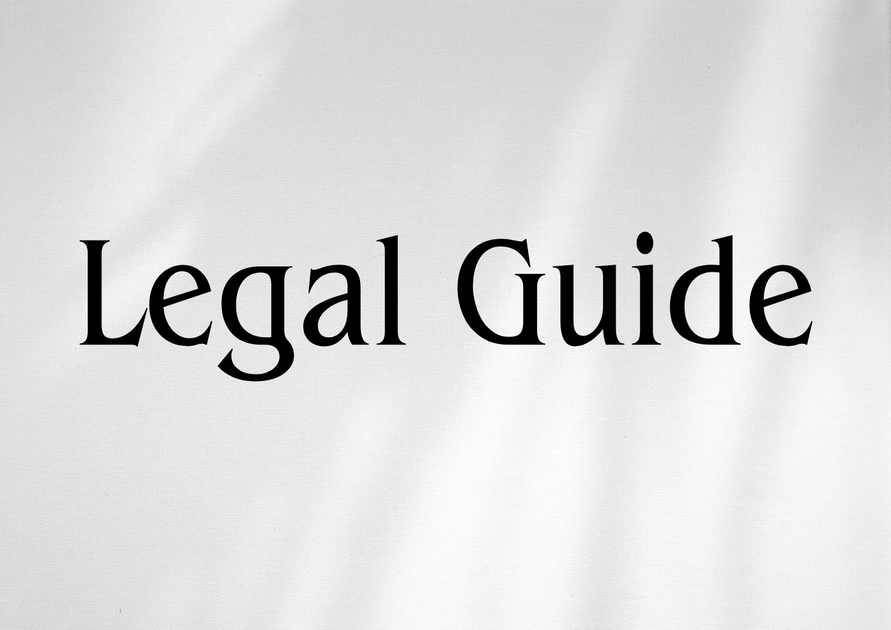Introduction
Property boundary disputes have long posed challenging legal, commercial, and personal dilemmas within the UAE’s evolving real estate market. As the country cements its reputation for innovative urban development and property investment, occasion for boundary-related conflicts is rising—both in residential and commercial spheres. Major reforms, including recent 2025 federal decree updates, emphasize the government’s drive for legal transparency, dispute avoidance, and investor protection. For businesses, developers, property owners, HR managers overseeing company accommodation, and legal practitioners, understanding the latest legal framework regarding property boundaries is crucial. It ensures risk mitigation, regulatory compliance, and effective dispute resolution. This article delivers an expert, consultancy-grade analysis of the legal mechanisms governing property boundary disputes in the UAE, with in-depth coverage of statutory foundations, procedural guidance, and strategic recommendations.
Table of Contents
- UAE Legal Framework for Property Boundary Disputes
- Key Provisions and Recent Updates Under UAE Law
- The Resolution Process for Property Boundary Disputes
- Practical Insights and Common Scenarios
- Penalties, Risks, and Compliance Strategies
- Case Studies and Hypothetical Examples
- Best Practices and Proactive Approaches for Property Owners
- Conclusion: Future Trends and Recommendations
UAE Legal Framework for Property Boundary Disputes
The Core Laws and Governing Bodies
Boundary disputes in the UAE are regulated primarily by:
- Federal Law No. 5 of 1985 (UAE Civil Transactions Law)—Governing property rights and obligations.
- Federal Law No. 6 of 2018 (Real Estate Regulatory Law, as amended by 2025 decrees)—Outlining registration, surveying, and dispute provisions.
- Relevant Emirate-level property laws (e.g., Abu Dhabi Law No. 3 of 2005, Dubai Law No. 7 of 2006).
The Department of Land and Property in each emirate (for example, Dubai Land Department, Abu Dhabi Department of Municipalities and Transport) is the principal administrative authority. Disputes may also be escalated to the Courts of First Instance or specialized real estate tribunals. Recent legislation, notably the 2025 Federal Decree-Law No. 12 on Land Dispute Resolution, seeks to accelerate dispute settlements and foster investor confidence.
Placement Suggestion: An infographic here could visualize the interrelation between Federal law, local emirate laws, and responsible authorities.
What Constitutes a Property Boundary Dispute?
Typical disputes may arise due to:
- Unclear or ambiguous property demarcations in title deeds;
- Encroachments, inadvertent or deliberate, upon a neighbor’s property;
- Conflicting survey results or official maps;
- Construction crossing legal setbacks or boundaries;
- Historical, tribal, or customary boundary claims.
The legal approach often starts by analyzing the registered paperwork, survey plans, and any prior agreements or easements.
Key Provisions and Recent Updates Under UAE Law
Boundary Definition and Registration
Under UAE Civil Transactions Law, Article 774, each property owner is entitled to define and protect the boundaries of their land, based on official maps registered with the respective land department. Any change to boundaries or property area must be officially surveyed and ratified.
Following Federal Law No. 6 of 2018 (Real Estate Regulatory Law), all property boundaries must be:
- Professionally surveyed by licensed experts;
- Registered in the official registry of the relevant emirate;
- Updated in the event of subdivision or consolidation.
2025 Update: Federal Decree-Law No. 12
The new Federal Decree-Law No. 12 of 2025 on Land Dispute Resolution strengthens procedural timelines and introduces mandatory alternative dispute resolution (ADR) steps before litigation. Among its key features:
- Mandatory Mediation: All boundary disputes must now first be referred to official mediation panels before access to courts is granted.
- Expedited Survey Procedures: Land departments are obliged to provide binding survey reports within 30 days of dispute notification.
- Establishment of Specialized Land Dispute Tribunals: Cases unresolved at mediation proceed to fast-track tribunals, whose judgments are enforceable within 14 days, subject to appeal only on points of law.
- Penalties for Frivolous Claims: The new law penalizes vexatious or unfounded boundary claims, imposing fines and costs on non-meritorious parties.
| Aspect | Before 2025 | After 2025 Update |
|---|---|---|
| Mediation | Optional, limited in scope | Mandatory, formalized step before courts/tribunal |
| Survey Reports | No binding timeframe | 30-day deadline, binding pending appeal |
| Tribunals | General courts handle cases | Specialized tribunals for boundary disputes |
| Appeals | Normal court appeal process | Appeals restricted to points of law only |
| Penalties for Frivolous Claims | Not specifically addressed | Penalties and compensatory costs introduced |
Local Law Variations and Relevant Authorities
Each emirate enforces slight variations. For example:
- Dubai Law No. 7 of 2006 empowers the Dubai Land Department and the Rent Disputes Settlement Centre to resolve property and boundary-related disputes.
- Abu Dhabi Law No. 3 of 2005 vests authority in the Abu Dhabi Department of Municipalities and Transport, which also now hosts mediation panels as per the 2025 decree.
The Resolution Process for Property Boundary Disputes
Step 1: Initiation and Notification
The formal process commences when a property owner notifies their local land department of a suspected boundary encroachment or conflict, supplying:
- Registered title documents;
- Official site plans and surveys;
- Photos or evidence of alleged encroachment.
The responding party is duly notified and invited to submit a response.
Step 2: Site Inspection and Survey
The land department dispatches licensed surveyors to conduct a site visit. The positions are compared to registry plans and cadastral maps. The new legal update requires:
- Finalized, certified survey report (delivered within 30 days);
- Opportunity for both parties to make submissions or objections;
- Interim recommendations for remedial measures if urgent.
Step 3: Mediation and ADR Mechanisms
If the parties do not agree on the survey findings, the law mandates referral to a mediation panel within the land department. The process aims to reach compromise via:
- Facilitated negotiation under independent mediator;
- Proposals for minor boundary adjustments, compensatory payments, or easements;
- Drafting of binding mediation settlements, enforceable by law.
Failure of mediation escalates the matter to a specialized tribunal.
Step 4: Tribunal or Court Proceedings
The tribunal examines:
- Survey evidence and expert testimony;
- Registered documentation and witness statements;
- Legal arguments under relevant statutes.
Judgments are issued with binding timelines for enforcement. Only points of law may be appealed to higher courts.
Placement Suggestion:
A process flow diagram visualizing steps: Notification → Survey → Mediation → Tribunal/Court, with regulatory timelines.
Practical Insights and Common Scenarios
Scenario 1: Neighbor Encroachment in Villa Communities
Situation: A villa owner in Dubai alleges that their neighbor has extended a boundary fence, occupying part of their registered plot.
- Immediate advice: Collate all registered land documents, obtain photographic evidence, and consult the Dubai Land Department for a survey.
- If survey findings are contested, submit the dispute to the mediation panel as now mandated by 2025 law. Early engagement often prevents reputational or legal escalation.
Scenario 2: Developer vs. Corporate Tenant in Commercial Projects
Situation: A multinational company finds newly-emerging boundary discrepancies in their leased warehouse, impacting access rights.
- Initiate a joint survey involving the company, the developer, and the relevant land department.
- If rapid resolution is required, parties may agree an interim access easement pending formal dispute outcome, safeguarding operational continuity.
Consultancy Recommendation: Key contracts (leases, management agreements) should include robust clauses on boundary rectification procedure, cost allocation, and dispute resolution per current law.
Scenario 3: Title Registration Ambiguities for Off-plan Purchases
Situation: Off-plan unit buyers discover that post-handover, actual boundaries diverge from anticipated plans due to project modifications.
- Timely, proactive due diligence and involvement of an independent surveyor is essential before final handover acceptance.
- If discrepancies arise, use the expedited land department survey and mediation procedures to secure quick rectification before formal registration.
Placement Suggestion:
An illustrated map (showing typical encroachment types: fence, wall, access road) could improve client comprehension.
Penalties, Risks, and Compliance Strategies
Compliance Checklist for Property Owners and Businesses
| Action | Legal Basis | Recommended Frequency |
|---|---|---|
| Verify property boundaries on registry plans | Federal Law No. 6 of 2018 | On purchase, and annually |
| Commission independent professional surveys | Local Land Department regulations | Before construction/modifications |
| Maintain up-to-date title deeds and agreements | UAE Civil Transactions Law | Ongoing |
| Address disputes promptly via land departments | Federal Decree-Law No. 12 of 2025 | Upon first notice of issue |
Risks of Non-Compliance
- Financial Penalties: The 2025 decree-law introduces fines up to AED 250,000 for encroachments or non-cooperation.
- Enforced Remedial Action: Authorities may forcibly remove unauthorized structures at the owner’s expense.
- Restrictions on Sales or Mortgages: Outstanding disputes or non-compliant boundaries can halt property transactions and delay financing.
- Reputational Damage: Protracted disputes may undermine the position of commercial developers or corporate occupiers with investors and partners.
Practical Tips: Minimizing Dispute Risks
- Engage certified surveyors and legal specialists before any physical changes to property.
- Incorporate ADR and rectification provisions in property and construction contracts.
- Regularly update and review legal boundaries, especially in multi-unit or mixed-use developments.
- Educate HR and property managers on registration protocols and early interventions.
Case Studies and Hypothetical Examples
Case Study 1: Corporate Park Boundary Dispute – Timely ADR Saves Millions
Background: Two corporations occupying adjacent plots in a Dubai freezone discovered a substantial discrepancy during planned expansion—each claimed ownership over a prime car park sector.
Approach: By activating the official mediation process under the 2025 law and appointing a joint surveyor, parties resolved the matter in less than 45 days, agreeing to shared usage and compensation—thus avoiding a lengthy court battle.
Case Study 2: Residential Encroachment—Costly Delay
Background: A Dubai resident ignored a neighbor’s minor fence overstep for several years. When the matter was eventually referred to the tribunal after failed mediation, the neighbor had established adverse usage rights, leading to loss of land area and liability for costs.
Key Lesson: Addressing minor disputes early, in accordance with current statutory pathways, is vital to safeguard rights and limit financial exposure.
Case Study 3: Developer Liability—Inaccurate Title Maps
Background: Multiple off-plan buyers found their completed villas misaligned with registered boundary lines in Abu Dhabi. The tribunal ordered the developer to bear the cost of redrawing boundaries and rectifying title deeds due to failure to update official maps after construction changes.
This illustrates the heightened accountability for developers under the 2025 regime and the importance of rigorous compliance at all project stages.
Best Practices and Proactive Approaches for Property Owners
Legal Documentation and Due Diligence
- Obtain and preserve all official land surveys, plans, and registration documentation.
- For corporations, appoint internal real estate compliance officers to oversee regular boundary verifications and dispute prevention.
- Where properties adjoin government land, regularly check for regulatory changes or large-scale infrastructure works.
Strengthening Contracts and Managing Third Parties
- Include explicit procedures for handling boundary modifications or errors in all purchase and lease agreements.
- Mandate joint surveys and mediation as pre-condition to litigation in commercial arrangements.
Effective Engagement with Authorities
- Proactively engage with land authorities at the first sign of dispute; early technical clarification often allows amicable solutions.
- Participate constructively in tribunal or mediation settings to secure the most favorable and efficient outcome.
Conclusion: Future Trends and Recommendations
Recent federal and emirate-level reforms—including the 2025 Federal Decree-Law No. 12—have transformed the landscape of property boundary disputes in the UAE. By shifting towards mandatory ADR, specialized single-issue tribunals, and stricter penalties, the legal system aims to ensure clarity, speed, and investor protection. These changes obligate property owners, developers, businesses, and legal practitioners to remain informed and proactive.
Key Takeaways:
- Early engagement and voluntary compliance with survey and mediation findings are crucial for minimizing protracted disputes.
- Documentation and contractual precision are the foundation of effective boundary management and dispute prevention.
- Non-compliance now entails steeper legal, financial, and reputational risks than ever before.
Looking forward, as the UAE’s regulatory environment continues to mature, best practice demands that all stakeholders prioritize legal due diligence, regular compliance audits, and constructive engagement with evolving dispute resolution mechanisms. This approach not only ensures legal protection and business continuity but also supports the UAE vision for an investor-friendly, dispute-resilient real estate market.
For tailored guidance or immediate assistance with property boundary issues, engaging specialist legal counsel remains the first and best line of defense.



